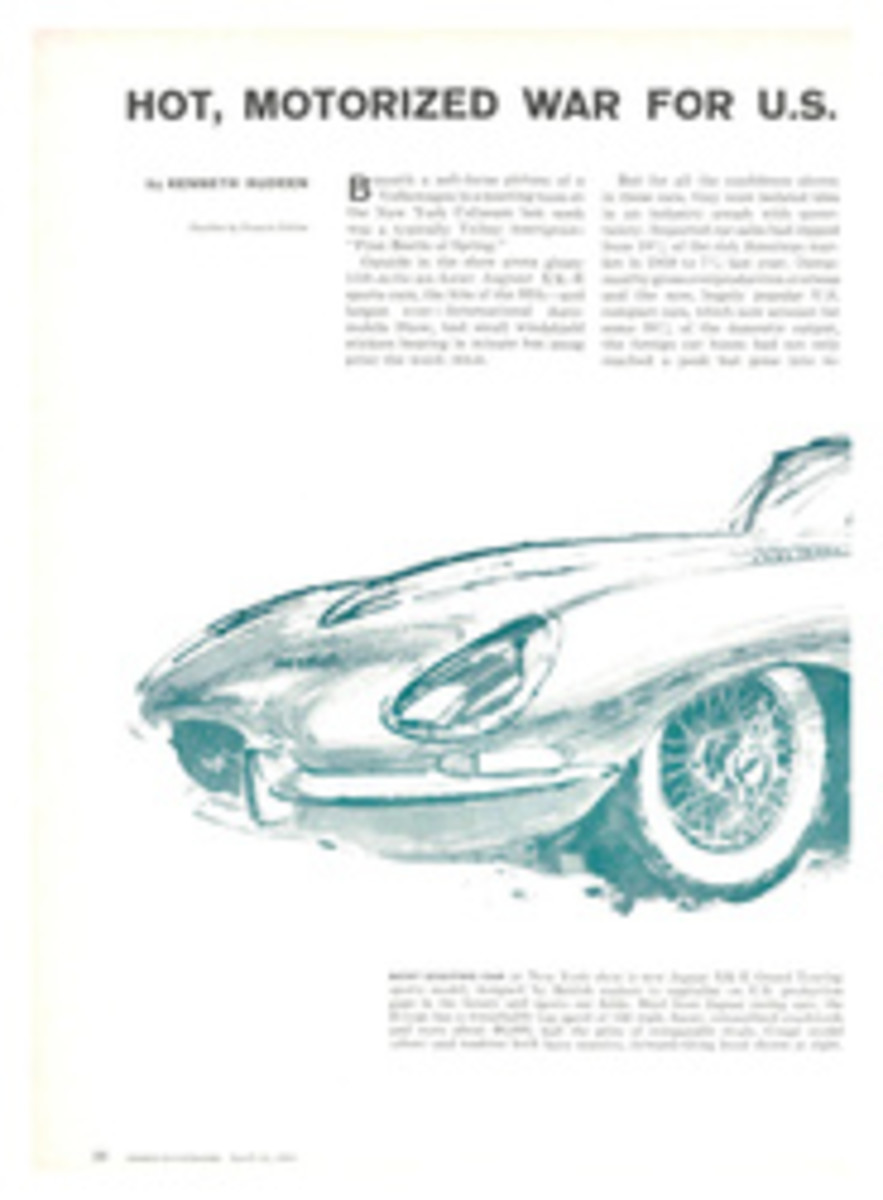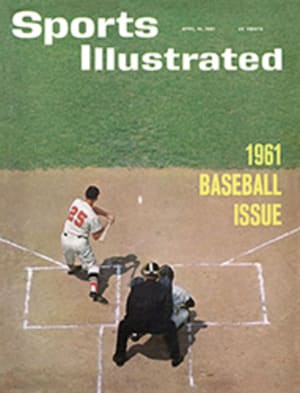
KANSAS CITY ATHLETICS
ANALYSIS OF THE ATHLETICS
STRONG POINTS
New Owner Charles Finley brings a willingness to spend money on the team and new General Manager Frank Lane brings a willingness and a skill to trade for the players the club needs. Both men should help and, at the least, make baseball interesting in Kansas City. Bud Daley, KC's All-Star knuckle-baller, had a 16-16 record last year after a torrid start, but his temperate finish and high ERA (4.56) cast some doubt on his quality. Ray Herbert had 14 wins, 253 innings pitched and a slick 3.27 ERA. He is 31 and seems ready for a big year.
WEAK SPOTS
No pitching depth, unproved catching, lack of hitting in infield and outfield. Athletics finished a bad last in 1960. The club had no power pitching (last in strikeouts) and no power hitting (last in home runs). Aside from Daley and Herbert, no pitcher won more than eight games. Catching consists of three second-liners from other clubs: ex-Dodger Joe Pignatano, ex-Red Sox Haywood Sullivan and ex-Oriole Clint Courtney. The A's are expecting big things from Marv Throneberry at first base, yet he has never lived up to exciting minor league promise (185 HRs in six years). Hank Bauer still hustles but has lost the long ball. Bill Tuttle never had it, and Norm Siebern, who will play left field, presses too much against the Yankees (anti-NY BA: .217). The fact that Lane fired Manager Joe Gordon once and traded him another time when both were at Cleveland doesn't add too much to the team's confidence in the manager.
THE BIG IFS
Andy Carey is over his physical miseries. A's infield needs him. Don Larsen suffered last year physically (bad back), mentally (a stay at Dallas) and professionally (1-10). A's pitching needs him.
ROOKIES AND NEW FACES
A's will open with rookie Dick Howser, 23, a blond crew-cut, at short this year. Howser looks like a misplaced Little Leaguer (5 feet 9, 155), but can make the deep throw, is smooth in the field, has never hit less than .278 in four pro years. Lefty Joe Nuxhall from Reds could help relief brigade, and Bob Boyd, pinch hitter extraordinary, will give Gordon a vital bat.
OUTLOOK
It isn't good. Improved efforts by Throneberry, Carey and Siebern, a couple of surprises from the young pitchers—and the A's might move up a notch. If not, they will find little solace in old cry of eighth-place managers, "We've got no place to go but up," because this year they can go down.
UP FROM CAIRO, ILLINOIS
Places like Cairo, Ill. and Cambridge, Md. and Valdosta, Ga. and Asheville, N.C. don't mean much to a ballplayer. For Joe Pignatano, catcher, they were old hotels and hot buses, cold meat sandwiches and night games under sorry lights. It was the hot dog and hamburger leagues, the sweatshops of baseball, where the young live on hope and the old on memory.
But when you're 18, as Pignatano was in 1948, even Cairo, Ill. is something. For a kid from Brooklyn, it had all the adventure of life. Now, 10 towns have passed, and this year a new one—Kansas City—will be listed in the record book under Joe Pignatano's name.
After years of being a reserve catcher—the bullpen man, third string—Pignatano has a chance to be the regular catcher at Kansas City. That makes Cairo and Valdosta, Fort Worth and St. Paul, Brooklyn and, yes, even Los Angeles, unimportant. Pignatano does not wallow in the memory of playing with the world champion Dodgers of 1959. He scoffs when he is reminded of the slide he made as a pinch runner that won a vitally important game with the Giants that year.
"I want to play," explains Joe Pignatano. "That's the important thing. I want to catch 100, 125, 150 games. I was the happiest guy in the world when I came to Kansas City. I could have kissed the Dodgers for sending me here."
A small boy stretched over the edge of the railing as Pignatano talked. "Sign this please, huh?" The catcher signed the book.
"I got Joe Pignatano," the little boy said to his friend.
Dale Mitchell held his bat a couple of inches from the bottom that October day in 1956, and Don Larsen threw his last pitch. The batter struck out, and Larsen had etched his name forever in baseball legend: he had pitched a perfect game, and he had pitched it in the World Series. Not all the heroes of all the games in all the years ever did anything like it.
Today Larsen is crew-cut as he was then, and he looks much the same—handsome, tall, strong. Does the perfect game come to his mind often? Does he think it changed his career? "Nah," says Larsen. "Each day is a new day."
But Larsen's days are not so exciting now. He is a pitcher with the Kansas City Athletics, and he is 31. Last year he pitched 39 innings at Dallas, and everybody (especially those in Houston) knows Dallas is not in the major leagues. Larsen's record from that day in 1956 tells a story: his wins have fallen from 10 to 9 to 6 to 1; his losses have risen from 4 to 6 to 7 to 10.
Larsen dressed slowly in the Kansas City clubhouse after a workout. "I'm getting plenty of work," he said. "I'm hoping for a better year. It couldn't be any worse than last year was. My back was hurt last year. I got out of shape, never could get going. Confidence, that's all I need. Get my confidence back. Just a couple of good games."
Larsen suddenly began to talk about his off-season job with a piping supply company in San Diego. "Get the name down," he said to the reporters around him. "Balboa Piping."
Somehow, it seemed an odd thing to worry about for a man who had pitched a perfect game in the World Series.
THE FRONT OFFICE
New Owner Charles Finley and new General Manager Frank Lane bring vitality, hope and money. Finley, who was once bat boy for Birmingham Barons, nearly died of tuberculosis in 1946. While recuperating, he devised a new insurance plan for professional men, is now worth $10 million. He bought A's this winter (after trying for seven years to buy an AL franchise), owns 100% stock, enticed General Manager Frank Lane from Cleveland with four-year contract at estimated salary of $100,000. The much-traveled Lane (Chicago White Sox 1948-55, St. Louis Cardinals 1956-57, Cleveland Indians 1958-60), is a trader and tends to ignore farms, but Athletics, under Farm Director Henry Peters, are going after young players. Top minor league team is Triple-A Honolulu—new state's first club in organized ball.
THE BALL PARK
Everything is pretty much up to date in Kansas City. Municipal Stadium (33,241 capacity) easy to reach, easy to leave. Two miles southeast of downtown area; 10 minutes from there by car, 20 by express bus. Parking (50¢ to $1) for 4,500 cars. Postgame traffic usually dispatched in half hour. New boxes, bleachers this year have increased capacity. New tunnel, lined with concession stands and rest rooms, runs from street level to seats along first-base line, facilitates flow of crowd. Fence in left moved back from 330 feet to about 370, since opposition hit more homers there last year than A's did. Home bullpen now in right instead of distant center, which eliminates need for car that used to transport pitchers from bullpen to mound. Picnic area planned behind new bleachers in left field. Only food specialty: pizza ($1.25). Ushers do not expect a tip.
[originallink:10504356:43610]
PHOTO
NORM SIEBERN
PHOTO
RAY HERBERT
PHOTO
BILL TUTTLE
PHOTO
DICK WILLIAMS
ILLUSTRATION
BILL CHARMATZ

